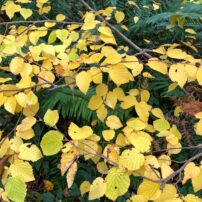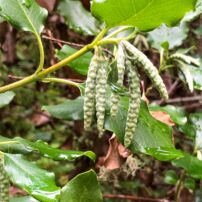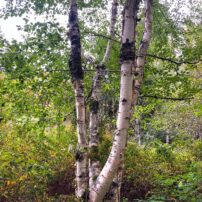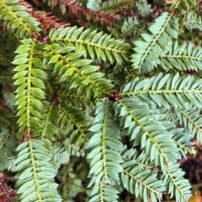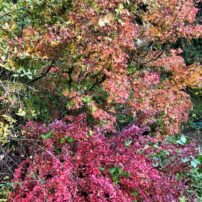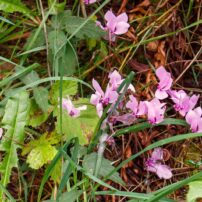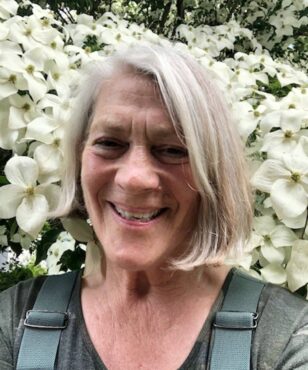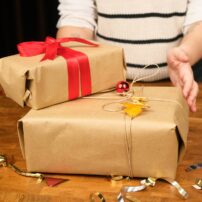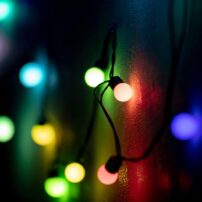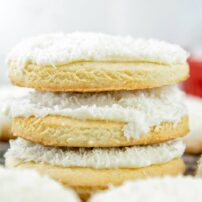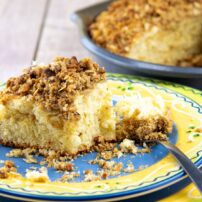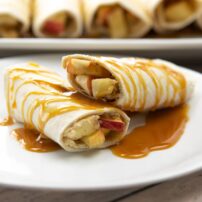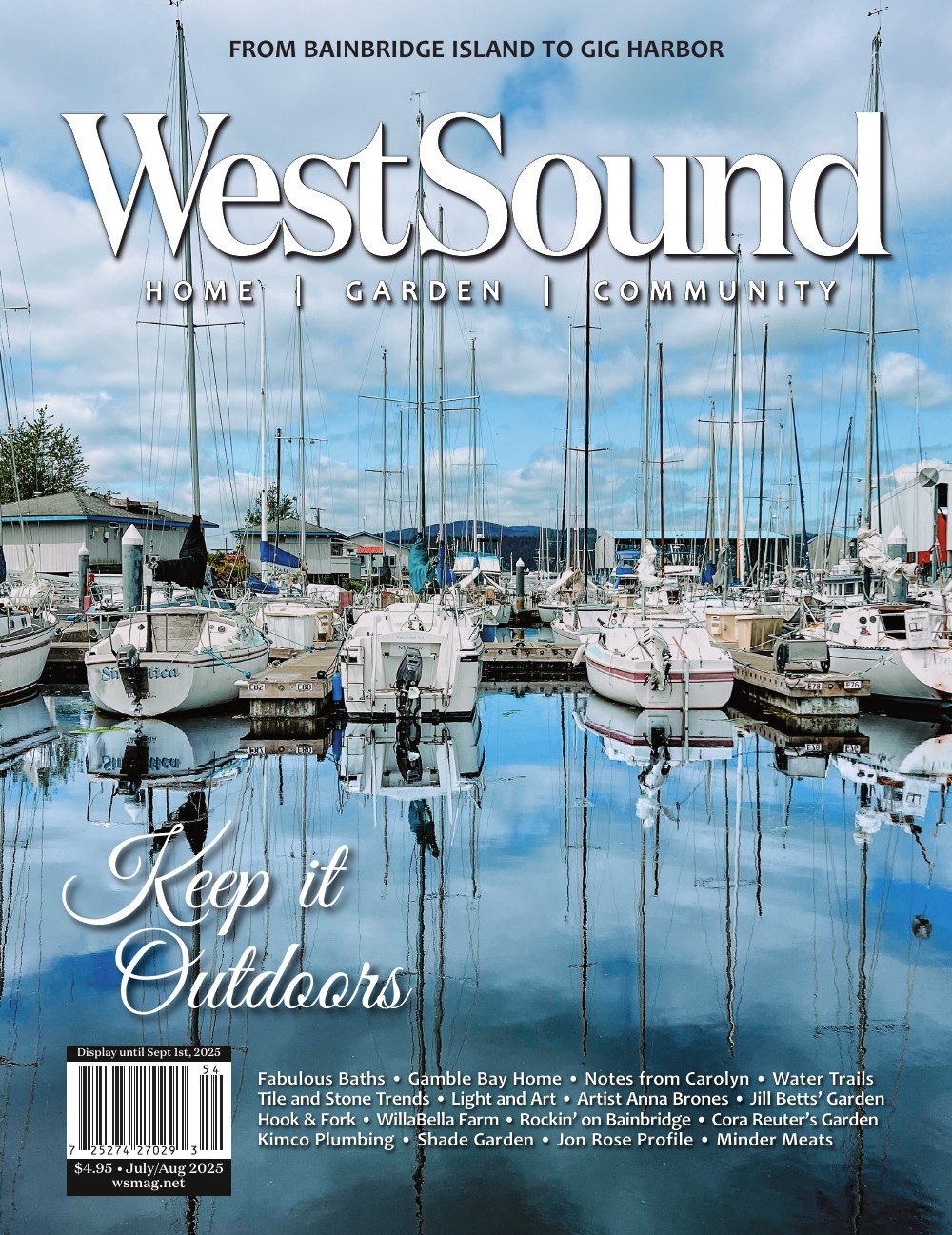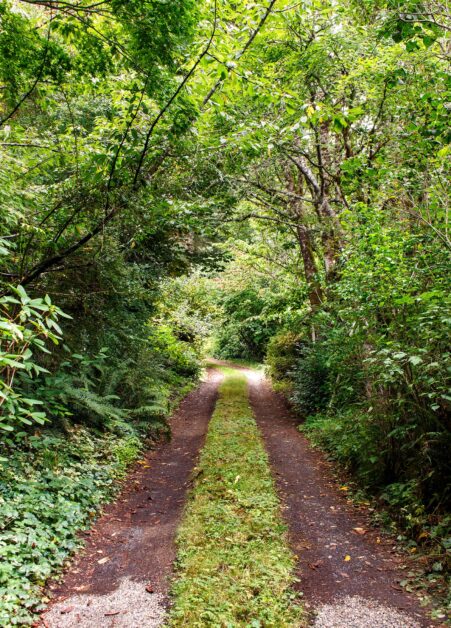 For three decades, Sam Rader has been transforming 5 acres of woodland in Poulsbo. By combining the concepts of an arboretum, focusing on trees and a botanic garden and emphasizing education and display, he has created a type of gold mine. A wide variety of plants have been utilized, including many unusual and uncommon species, while maintaining the native landscape.
For three decades, Sam Rader has been transforming 5 acres of woodland in Poulsbo. By combining the concepts of an arboretum, focusing on trees and a botanic garden and emphasizing education and display, he has created a type of gold mine. A wide variety of plants have been utilized, including many unusual and uncommon species, while maintaining the native landscape.
The entrance to Rader’s property is a long, curved dirt drive, walled with a diversity of shrubs and trees. Edging this drive are rhododendron, hazelnut, purple-leaved plum and almond trees. A Parrotia tree changes hues daily in the fall season. The upper story of taller trees provides ample shade and creates a colorful backdrop. A turn in the drive reveals yellow and orange foliage from different species of deciduous trees, strategically placed.
Rader grew up in St. Joseph, Missouri, as a “city kid.” During the summers of his elementary school years, he spent time on a relative’s Oklahoma farm, which enhanced his love for nature and the outdoors. After service in the Navy, Rader and his wife ended up in Bremerton, faced with a challenge of what type of work to pursue. The Navy had taught him, among other things, that he did not want a desk job. Outdoor work was what he desired, so he began to take horticulture classes at South Seattle Community College.
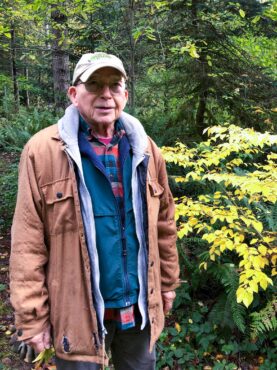
In 1986, Furney’s Nursery expanded its South Seattle and Bellevue locations by opening a 2-acre site in Bremerton. Rader took a part-time job there, and before long became the manager. Having taken the Washington Certified Nurseryman training program (now Certified Professional Horticulturist), he became a certified arborist. The Peninsula Fruit Club educated him in becoming a specialist in fruit trees.
As nursery customers requested certain varieties of roses, Rader learned more about roses and successfully encouraged the nursery to add them. The same was done with dahlias. His training made him perfect for the questions presented by customers. When the nursery closed the Bremerton location in 1996, Rader found a great spot close to home at Valley Nursery in Poulsbo. He is still employed there, demonstrating his expertise in the Answer Shack, addressing customers’ questions and educating them in all areas of horticulture.
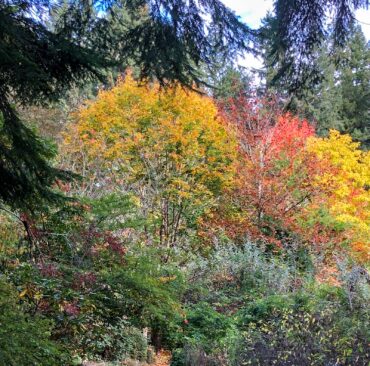 By 1986, the family had moved to a 5-acre farm property in Poulsbo filled with woods, a wetland, dilapidated farmhouse, shed and barn. Soon the farmhouse was demolished and new buildings were built. The family grew a large vegetable garden and raised all sorts of poultry. In addition to chickens, they raised ducks, geese, turkeys, peacocks, pheasants and quail. Rader brought plants home from his nursery job and began planting.
By 1986, the family had moved to a 5-acre farm property in Poulsbo filled with woods, a wetland, dilapidated farmhouse, shed and barn. Soon the farmhouse was demolished and new buildings were built. The family grew a large vegetable garden and raised all sorts of poultry. In addition to chickens, they raised ducks, geese, turkeys, peacocks, pheasants and quail. Rader brought plants home from his nursery job and began planting.
The first tree planted on the property was a river birch, Betula nigra, placed on the far side of the wetland. The leaves shimmer and shake in the slightest breeze, drawing the viewer’s eye. The white bark is noteworthy. At one point, Rader cut the single trunk back and the tree responded by producing four trunks. From across the wetland, it appears as a small grove of birch.
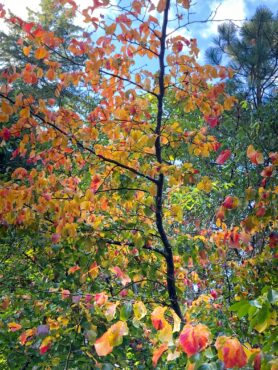 For much of the year, iris and cattails fill the wetland, which is edged with native western spirea. The spirea, or “hardtack,” provides nesting and shelter for species of ducks and waterfowl. When the rainy season arrives, a neighbor’s pond overflows and the wetland becomes a seasonal pond. This enhances the natural aspects of the property, increasing the number of bird and animal species present.
For much of the year, iris and cattails fill the wetland, which is edged with native western spirea. The spirea, or “hardtack,” provides nesting and shelter for species of ducks and waterfowl. When the rainy season arrives, a neighbor’s pond overflows and the wetland becomes a seasonal pond. This enhances the natural aspects of the property, increasing the number of bird and animal species present.
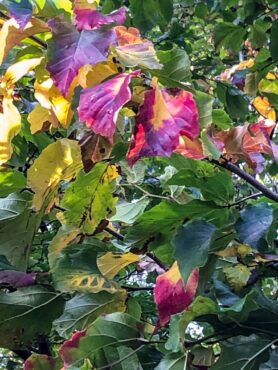 Herons, eagles, red-winged blackbirds and various duck species find food, water, shelter and nesting materials here. Squirrels are quick to find chestnuts and cone seeds. Raccoons disturb the thatching ant hills, looking for larva. Coyotes and deer track along the same trails. Bear have visited, and Rader recently photographed a young cougar from his kitchen window.
Herons, eagles, red-winged blackbirds and various duck species find food, water, shelter and nesting materials here. Squirrels are quick to find chestnuts and cone seeds. Raccoons disturb the thatching ant hills, looking for larva. Coyotes and deer track along the same trails. Bear have visited, and Rader recently photographed a young cougar from his kitchen window.
Surveying the wetland area, one sees a panorama of different species. Sugar maple and silver maple are mixed in with weeping and river birch. Quaking aspen, blue spruce and plume cryptomeria bring their characteristic styles of growth. Two species of sweet gum and a Japanese black pine join weeping willow and golden Hinoke cypress. Rader has creatively placed these cultivars to accent the native Douglas fir, red alder, western red cedar and big leaf maple.
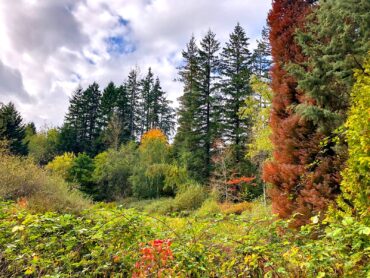 The former vegetable garden area has been transformed into a wooded glen. Young Douglas firs have claimed this site, supported by sword fern and star flower, but graced by native hardy cyclamen. Rader has encouraged these fall and winter bloomers and is assisted by the colonies of ants nearby. Thatching ants build hills by gathering needles, bark and other debris as shelter for the colony. In doing so, the ants transport seeds from plants, including the cyclamen. In this way, Rader is expanding the patches of pink or white from the flowers that enhance this grove from October through February.
The former vegetable garden area has been transformed into a wooded glen. Young Douglas firs have claimed this site, supported by sword fern and star flower, but graced by native hardy cyclamen. Rader has encouraged these fall and winter bloomers and is assisted by the colonies of ants nearby. Thatching ants build hills by gathering needles, bark and other debris as shelter for the colony. In doing so, the ants transport seeds from plants, including the cyclamen. In this way, Rader is expanding the patches of pink or white from the flowers that enhance this grove from October through February.
Monkey puzzle tree, Araucaria araucana, is native to parts of Chile and Argentina, yet Rader has planted one in Poulsbo. These evergreen trees have a very distinctive, open structure, but the branches are densely covered with small, stiff, triangular-shaped leaves. Cones are not produced until the tree is at least 30 years old. Rader is delighted that his tree produced cones this past season.
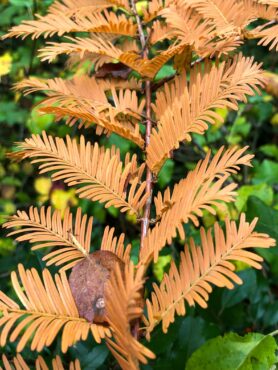 Although the property contains many rare and uncommon plant species, more common landscape shrubs are present, such as lilac, dogwood, golden chain, pyracantha, flowering cherry and burning bush. Rader has an interesting method for identifying what he has planted. He places a rock at the base of each tree or shrub with the plant identification tag beneath. He developed this method when he discovered his free-range geese were removing the tags attached to the plants.
Although the property contains many rare and uncommon plant species, more common landscape shrubs are present, such as lilac, dogwood, golden chain, pyracantha, flowering cherry and burning bush. Rader has an interesting method for identifying what he has planted. He places a rock at the base of each tree or shrub with the plant identification tag beneath. He developed this method when he discovered his free-range geese were removing the tags attached to the plants.
A path follows the wetland edge, and the variety of tree species continues. White oak, Spanish fir, golden spruce and Chinese fir are placed along with sycamore, redwood and black walnut. The trail seems to end in a boggier spot, the perfect environment for the bald cypress, which is native to the southeastern United States. The needles of this deciduous conifer turn rust-brown in fall, making a notable spot when viewed from the house.
Some specimen plants remain in containers. The boggy environmental requirements of the pitcher plant Sarracenia are managed well in a container without a drain. Several species of cacti are also containerized. Many other plants are yet to be placed in the ground, although some have spared Rader the trouble by breaking through the nursery pot to root themselves in place.
The meticulous records kept by Rader list the plant species, location and date planted. Spreadsheets record the bloom dates of over 100 trees and shrubs, covering almost a decade. Rader has a wealth of knowledge that is the true gold mine. He continues to spread those riches as he educates and encourages local gardeners.




